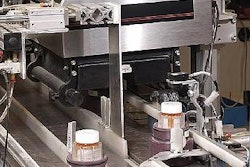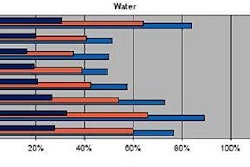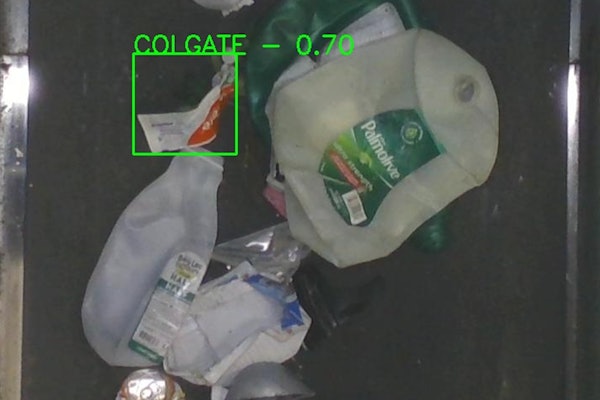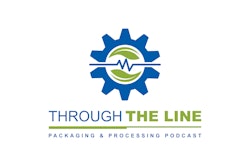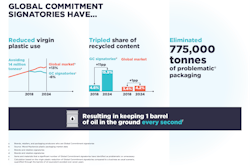It must have been the political winds wafting up from Washington, or the contagion of the presidential campaign season. Either could explain the cheerleading, polish, and proselytizing that characterized the EPC Global U.S. Conference 2004 in Baltimore September 28-30.
That was the message pounded home by EPC Global leaders and supporters from companies such as Procter & Gamble and Gillette, who were gamely trying to convince the close to 1ꯠ attendees—-or at least those who were packagers--that the radio-frequency identification standards process is moving fast. Their message: Companies of all sizes would be well advised to start testing the placement of RFID chips on their packages.
But these exhortations did not seem to wash away the reservations of many of the attendees, reservations that were buttressed by some of the speakers whose companies had started to embrace RFID. Manufacturers not affected by the Wal-Mart and Department of Defense dictates seem to be taking a wait-and-see attitude before plunging into a process which means, at least in the short term, high costs and low returns on investments.
EPC global is an organization, with ties to the Uniform Code Council, which boasts 1겨 members around the world who are ostensibly writing specifications and standards for RFID tags--semiconductors sprouting antennas--and associated readers on a sector by sector basis. So-called barebones Class 0 and Class 1 EPC standards are already published, and being used by packagers such as Gillette and P&G who are subject to the Wal-Mart dictate that all products coming into three of its Texas distribution centers have RFID tags on their cartons by January 2005. But companies have had all sorts of problems getting tags to work, which is the least of their problems, since Class 0 and 1 tags--referred to as “slap-and-ship” because of their low-tech category--represent all cost and no benefit to the packager.
Mandate bumps felt by packagers
Numerous Wal-Mart suppliers have felt those bumps in the road. “The testing process is generating more questions than answers,” said Don Mowery, director of ebusiness supply chain at Nestle Purina PetCare.
Mark Engle, senior director of IT for Campbell Soup Co., Camden, NJ, explained the testing Campbell’s was doing with various products at its “We Pack” facility in Paris, TX. The RFID tags Campbell’s is using in the tests with Swanson Chicken Soup, Prego Spaghetti Sauce and other products cost between 19¢ and 60¢ each. The information Campbell’s puts on the tag-- dictated by EPC standards—will help it track product cartons and pallets, as they will help Target, Albertson’s and other retailers, most recently Best Buy, which are now following in Wal-Mart’s footsteps. But the data on the low-tech tags will not help Campbell’s internally, in terms of improving its business processes. “We are looking at these projects as cost-plus for us,” Engle stated. “ROI is not evident for the foreseeable future.”
Gen 2: New and improved tags
The introduction of what are being called “Gen 2 UHF” tags may change the ROI equation for the better. Mike Meranda, president of EPC global US, one of the organizations in the somewhat confusing EPC network of organizations, said the standard would have some “critical advances” including global interoperability and “significant performance enhancements.” Meranda hoped the EPC Board of Governors would approve it before the end of 2004. Asked whether the Gen 2 standard would result in semiconductor companies being able to produce cheaper RFID chips, thereby stimulating their use by packagers, Meranda answered, “That is hard to predict.” But he added that he expected RFID chips to be sold much like television sets and game boxes, with different models at different prices. “We want to create a competitive marketplace,” he explained.
Anticollision properties
In an interview after the conference, Tony Sabetti, director of retail supply chain products for Texas Instruments, said that initially the cost of the Gen 2 tags with minimum functionality--with 96-bit identification and track-and-trace capability--will be about the same as the Gen 1 tags (Class 0 & 1) because the silicon die size is about the same. “But in the long term, their price will decrease because they have an open architecture, and more suppliers will start producing them,” Sabetti added. Besides global interoperability, the main advance in Gen 2 tags and readers will be their “anticollision” properties. This means there is less chance of interference when two different readers are in close proximity, for example one mounted on a warehouse door and another mounted on a nearby conveyor belt. Echoing EPC global’s Meranda, Sabetti added that TI and others will produce a variety of RFID tags, some with added features such as 256-bit identification, which means the tag is more secure.
Pharma stirrings
The pharmaceutical industry’s stirring is evident. At the conference, consulting firm Accenture ballyhooed the successful test of RFID with 13귔 pharmaceutical packages, which were tracked only within the industrial distribution channel, not to retail. Participants included Abbott Laboratories, Barr Pharmaceuticals, Cardinal Health, Pfizer, and others. EPC global has just created a health care action group that met the day before the EPC Global conference began. About 50 companies are participating. Their task is to write a drug packaging version of the Gen 2 standard.
Paul Rudolf, senior advisor of medical and healthcare policy at the Food and Drug Administration, noted that it is going to take longer to get health care EPC standards in place because of the special requirements involved. For example, he mentioned that the FDA regulates labels very tightly. The FDA has requirements for electronic records. Moreover, hospitals are concerned about radio frequency interference from RFID chips interfering with medical devices and surgical equipment. “And consumers are worried about someone being able to read their medication labels off a vial in their pocket,” he added.
P&G’s proprietary information
One of the things that may be impeding RFID momentum is this: On the one hand, standards are meant to be open and nonproprietary. One the other hand, those companies that are rushing to meet Wal-Mart, other retail and DoD dictates are zealously guarding details about their RFID implementations.




